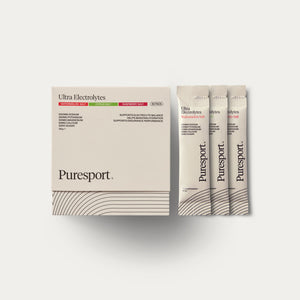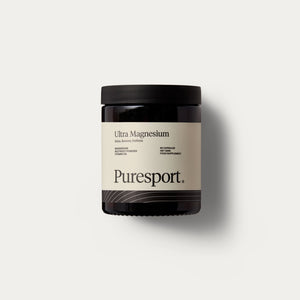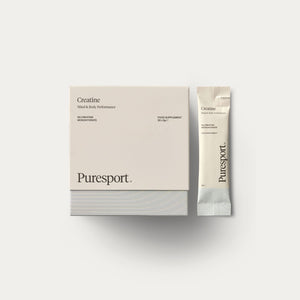Want to know why the chasteberry ingredient is popular in promoting female health? To help you better understand what chasteberry can do for you, we'll explain how it's helpful for you and what you should consider before taking it.
What is ChasteBerry?
Chasteberry is a herb that is used to treat premenstrual syndrome and infertility. It receives its name from the Vitex agnus-castus and is also called "monk's pepper" and "chaste tree". The plant grows in warm temperatures and subtropical regions most of the time.
Usually, Chasteberries grow to a height of 3-16 feet. For optimal growth results, it needs to have well-drained soil and have room to grow in sunny areas with partial shade. Once planted in alkaline or loamy soil, the chaste berry will gain height within a few weeks.
Based on its history and folklore, consuming chasteberry increases the libido of both men and women. Like chamomile, chasteberry stimulates the pituitary gland to aid the ovaries in creating more progesterone. During this time, chasteberry tinctures were made by distilling them and placing them in liquid form.
When should you use chasteberry? When you are experiencing irregularities in your menstrual cycle, chances are that you’ll need chasteberry extract. Another sign that females need chasteberry is poor reproductive health, limited function, and low progesterone levels.
Vitex Chasteberry Benefits
PMS Treatment
Vitex chasteberry has been proven in clinical studies to treat a multitude of PMS symptoms. For instance, Chasteberry can be used to treat symptoms such as anger, depressed mood, migraines, tenderness, and breast pain.
Based on this clinical trial, out of 100 women suspected of PMS. Fifty of those patients were given Chasteberry as a treatment for the other six days. At the end of the study, the patients experienced less irritability,
In some scenarios, PMS symptoms are made through an excessive prolactin release within your pituitary gland. Alternatively, it can be caused by a progesterone or estrogen imbalance. At high doses (400 mg), Chasteberry is able to reduce the prolactin within the body, which leads to restored estrogen hormones within the body.
Treats Infertility
Chasteberry and fertility go hand and hand. Based on a study that included 93 women, they could not conceive within 6-36 months. Within three months of the study, 26% of the test subjects reached pregnancy.
This study indicates that the patients who received chasteberry have helped with their pregnancy (compared to the 10% who received a placebo). Thus, chasteberry fruit's benefits are its ability to aid in regulating your hormones and fertility levels.
Reduces Inflammation
Based on chasteberry’s anti-inflammatory properties, it can be used to alleviate pain. In a few animal and test-tube studies, chasteberry can help with stimulating the opioid receptors. This can help reduce cramps and pain that are within endometriosis and menses.
For anyone who doesn't want to use NSAID pain relievers, you can use chasteberry as a good alternative. In addition, vitex chasteberry for acne aids in reducing the amount of acne that's on your face. Thus, resulting in clearer skin and less pain throughout the process.
Reduce Menopause Symptoms
Chasteberry’s hormone-balancing effects will reduce menopause symptoms. In a study, women have reported having improved menopause systems. Some patients even regain their period after using chasteberry.
In a study with 52 pre/postmenopausal women were using chasteberry cream. It has a 33% percent experience of having major improvements. There is another 36% that reported using moderate symptoms, including hot flashes and night sweats.
Chasteberry Herb Side Effects
Most of the chasteberry side effects are mild in nature. Side effects might include gastrointestinal disturbances, itching, headache, or nausea. For pregnant women, it is not safe to take chaste berry as it might cause irritation to their offspring.
In addition, chasteberry is not safe for women with hormone-sensitive health issues (i.e., ovarian, uterine, or breast cancer). If you're taking any medications, make sure you speak to your health care provider before attempting to use chasteberry.
Take care of your health when using chasteberry. On average, only try to use chasteberry at least 1-3 times a day at 20 mg extract. Chasteberry that’s sold in a liquid extract form can be consumed up to 40 mg a day. However, there are extracts with stronger dosage levels available.
However, you shouldn't use chasteberry supplements if you're breastfeeding or pregnant. Also. Avoid using chasteberry if you're on medication for Parkinson's disease or using antipsychotic drugs.
Can Chasteberry Cause Weight Gain?
Did you know that chasteberry can be used in SlimQuik and other weight loss products? However, there are mixed reviews on if a chasteberry is effective as a complete weight loss supplement. This means that the link between weight loss and chaste berries is minimal at best.
What Should I Consider Before Getting Chasteberry?
While chasteberry doesn’t have any serious side effects, it can lead to fatigue, dizziness, nausea, skin reactions, and dry mouth. It’s possible to see changes in the period when you’re taking chasteberry.
Because chasteberry can alter the estrogen and progesterone within your body, women with breast cancer shouldn’t use chasteberry. You need to understand the effectiveness of using hormonal contraceptives.
Usually, consuming chasteberry while having an oral contraceptive pill or Nuvaring will increase the chance of pregnancy. Always speak to your healthcare provider about the supplements, vitamins, OTC medications, and herbs you're taking.







